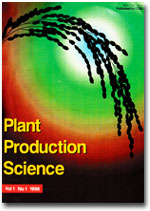Volume 5, Issue 4
Displaying 1-9 of 9 articles from this issue
- |<
- <
- 1
- >
- >|
-
2002 Volume 5 Issue 4 Pages 269-274
Published: 2002
Released on J-STAGE: January 31, 2008
Download PDF (3201K) -
2002 Volume 5 Issue 4 Pages 275-280
Published: 2002
Released on J-STAGE: January 31, 2008
Download PDF (1380K) -
2002 Volume 5 Issue 4 Pages 281-285
Published: 2002
Released on J-STAGE: January 31, 2008
Download PDF (705K) -
2002 Volume 5 Issue 4 Pages 286-293
Published: 2002
Released on J-STAGE: January 31, 2008
Download PDF (1200K) -
2002 Volume 5 Issue 4 Pages 294-300
Published: 2002
Released on J-STAGE: January 31, 2008
Download PDF (1502K) -
2002 Volume 5 Issue 4 Pages 301-304
Published: 2002
Released on J-STAGE: January 31, 2008
Download PDF (1696K) -
2002 Volume 5 Issue 4 Pages 305-310
Published: 2002
Released on J-STAGE: January 31, 2008
Download PDF (768K) -
2002 Volume 5 Issue 4 Pages 311-319
Published: 2002
Released on J-STAGE: January 31, 2008
Download PDF (1664K) -
2002 Volume 5 Issue 4 Pages 320-322
Published: 2002
Released on J-STAGE: January 31, 2008
Download PDF (444K)
- |<
- <
- 1
- >
- >|
